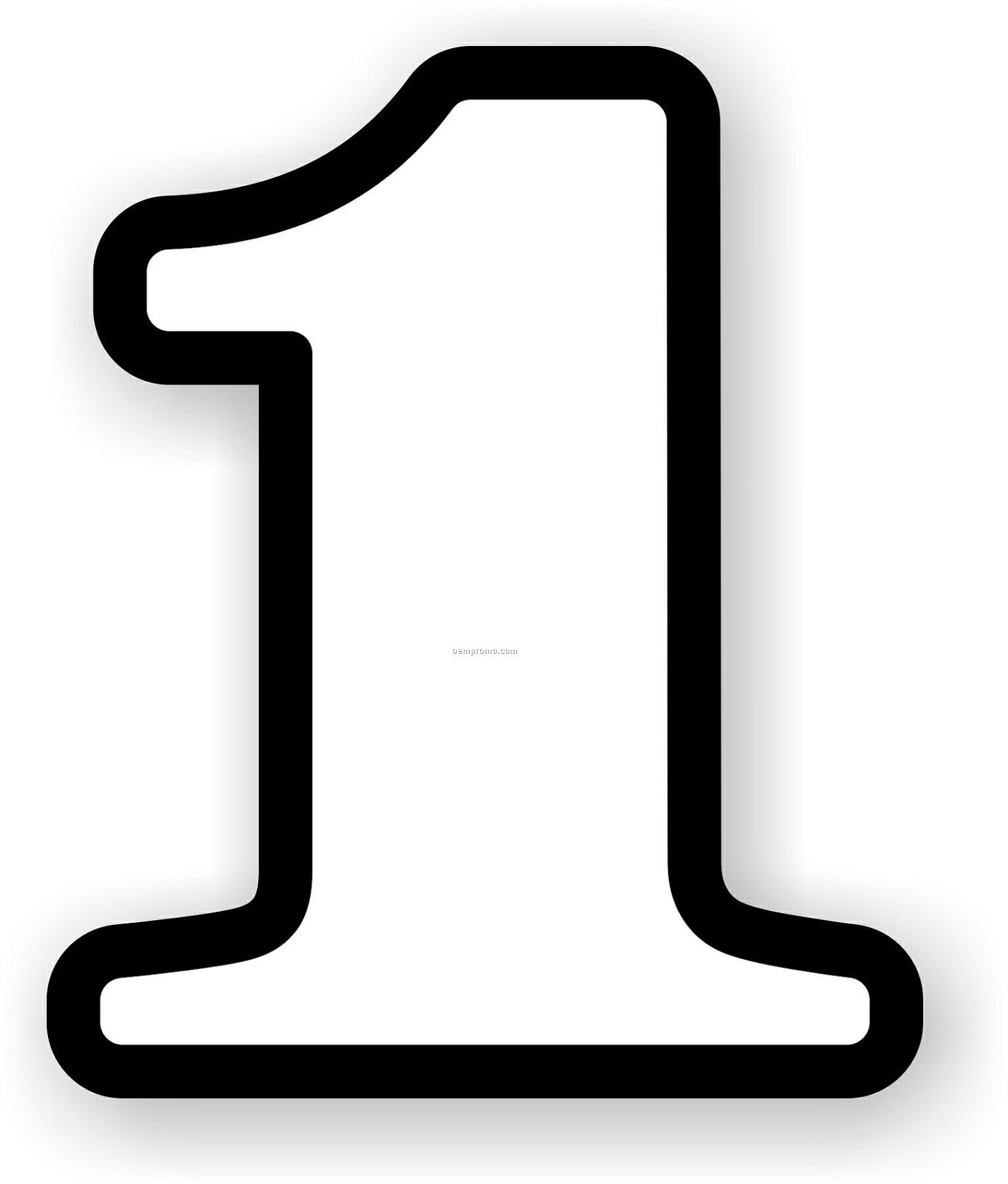Have you ever wondered what a truly large sum of money, say one million dollars, actually looks like when it's all in cash? For many people, the idea of having that much physical money is a fascinating thought, perhaps something seen only in movies or heard about in stories. It sparks a certain curiosity, doesn't it? Very often, our minds picture a mountain of bills, but the reality can be quite different from what we imagine, and that's interesting to consider, anyway.
Thinking about a million dollars in cash brings us to the very basic building block of all numbers: the number one. As our understanding of numbers tells us, one is the first and smallest positive integer, the very foundation for all other numbers. Just as the number one is a single unit, each dollar bill, whether it's a one-dollar bill or a hundred-dollar bill, represents a single unit of value. A million of these units, these individual pieces, come together to form that impressive total, you know?
This article will explore the physical reality of one million dollars in cash. We'll look at how much space it takes up, what it might weigh, and the different ways it can appear depending on the bill denominations. We'll also touch on some practical aspects, like the challenges of handling and keeping such a large amount of physical money safe. So, let's just get into the specifics of this intriguing question.
Table of Contents
- The Physical Dimensions of Money
- What One Million Dollars Looks Like by Denomination
- The Weight of Wealth
- Volume and Storage Challenges
- Practical and Security Considerations
- The Meaning Beyond the Physical
- Frequently Asked Questions
The Physical Dimensions of Money
Before we picture a million dollars, it helps to know a little about the actual size of the bills. In the United States, all paper currency, regardless of its value, measures the same. Each bill is approximately 6.14 inches long, 2.61 inches wide, and 0.0043 inches thick. This uniform size means that a stack of one-dollar bills will take up the same space as a stack of one-hundred-dollar bills, assuming the stacks have the same number of notes. It's kind of a neat design choice, actually.
Knowing these basic measurements is pretty important for figuring out the total volume and weight of a large sum. For instance, a stack of 100 bills is about 0.43 inches tall. This small measurement, when multiplied by thousands upon thousands of bills, adds up quickly. It shows how even the smallest unit, the individual bill, contributes to the overall physical presence of a million dollars, just like how the number one is the foundation for a million, you know?
What One Million Dollars Looks Like by Denomination
The appearance of one million dollars changes quite a bit depending on the denominations of the bills you have. A million dollars in one-dollar bills looks very different from a million dollars in one-hundred-dollar bills. This is a pretty significant point to consider, so we'll look at each scenario.
One-Dollar Bills
If you were to gather one million dollars in one-dollar bills, you would have exactly one million individual bills. That's a lot of paper, to be honest. Since 100 bills stack to about 0.43 inches, one million bills would create a stack roughly 4,300 inches tall. To put that in perspective, that's about 358 feet, or nearly the height of a 30-story building. Just imagine that, it's pretty wild.
The sheer volume of one million one-dollar bills would be immense. You couldn't just carry this around in a regular bag. It would fill a small room, or perhaps several large shipping crates. The idea of having that many individual units, each representing "one," really brings home the scale of a million, doesn't it? It's a very tangible way to see the concept of a million come to life.
Twenty-Dollar Bills
To make one million dollars using twenty-dollar bills, you would need 50,000 bills (1,000,000 divided by 20). This is a much more manageable number of bills compared to the one-dollar scenario. A stack of 50,000 bills would be about 215 inches tall, which is roughly 17.9 feet. That's still a considerable height, maybe taller than a typical room's ceiling, but it's not a skyscraper anymore. You can see how the choice of denomination really changes things, so.
In terms of volume, 50,000 twenty-dollar bills would likely fit into several large duffel bags or a few standard suitcases. It's still a significant amount, but it starts to look more like something a person might actually try to transport, rather than needing a warehouse. It’s still quite a bit of stuff, but it’s a more practical amount of money in terms of its physical presence, you know?
One-Hundred Dollar Bills
This is where one million dollars starts to look relatively compact. With one-hundred-dollar bills, you would need 10,000 individual notes (1,000,000 divided by 100). A stack of 10,000 bills would stand about 43 inches tall, which is just over 3.5 feet. This height is roughly equivalent to a small coffee table or a child's height, which is pretty surprising to some people.
Ten thousand one-hundred-dollar bills could fit into a single briefcase or a small backpack, depending on how tightly packed they are. It would still be heavy, but the volume is significantly reduced. This is often the denomination people imagine when they think of a large sum of cash that might be carried by a single person. It really shows how efficient the higher denominations are for storing value, in a way.
The Weight of Wealth
The weight of one million dollars in cash is another aspect that surprises many people. Each U.S. bill, regardless of its denomination, weighs approximately one gram. This is a pretty consistent measure across all notes. So, to calculate the total weight, you just need to know the total number of bills. This is where the denomination choice really makes a difference, so.
For one million dollars in one-dollar bills, you would have one million bills, meaning the total weight would be one million grams. This converts to about 1,000 kilograms, or roughly 2,204 pounds. That's over a ton! You would definitely need a truck, or maybe even a small forklift, to move that amount of money. It's completely impractical for personal transport, you know?
If you had one million dollars in twenty-dollar bills, you would have 50,000 bills. The total weight would be 50,000 grams, which is 50 kilograms, or about 110 pounds. This is still a considerable weight, roughly the same as a large person or a small bag of cement. While it could be carried by a strong individual, it wouldn't be easy or comfortable to carry for very long. It's a rather substantial burden, physically.
Finally, for one million dollars in one-hundred-dollar bills, you would have 10,000 bills. The total weight would be 10,000 grams, or 10 kilograms, which is about 22 pounds. This is a much more manageable weight. It's similar to a heavy bowling ball or a medium-sized bag of groceries. This amount could easily be carried in a briefcase or backpack by one person without too much strain. It’s pretty amazing how light it becomes with larger denominations, isn't it?
Volume and Storage Challenges
Beyond just weight, the volume of one million dollars in cash presents its own set of challenges, especially for storage. As we saw, the lower the denomination, the more space the money requires. This means that keeping a million dollars in cash safe and hidden can be quite a task, particularly if it's in smaller bills. You need a lot of room, basically.
Imagine trying to hide 2,204 pounds of one-dollar bills. That would require a very large, secure space, perhaps a dedicated vault or a hidden room. It's not something you could just tuck under your bed or in a regular safe. The sheer bulk would make it incredibly difficult to conceal from others. It's almost like trying to hide a small car, in a way.
Even with one-hundred-dollar bills, while it fits in a briefcase, that briefcase itself needs to be kept secure. A single briefcase full of money is a tempting target for thieves. So, you're not just thinking about the space the money takes up, but also the security measures needed for that space. This adds another layer of difficulty to having physical cash, you know?
The logistical issues extend to counting and verifying such a large sum. Counting 10,000 one-hundred-dollar bills by hand would take a considerable amount of time and effort. Financial institutions use special machines for this exact reason. So, it's not just about having the money, but also about the practicalities of handling it once you have it. It’s a pretty involved process, actually.
Practical and Security Considerations
Having one million dollars in physical cash comes with a host of practical and security concerns that most people don't often think about. For one, carrying or transporting such a large sum makes you a significant target. The risk of theft is extremely high, and protecting it would require constant vigilance and perhaps even professional security measures. It's a very real danger, that.
Another major consideration is the legal aspect. In many places, large cash transactions are subject to reporting requirements. For instance, in the United States, banks and other financial institutions must report cash transactions over $10,000 to the government. This is a measure to combat illegal activities like money laundering. So, you can't just move a million dollars around without drawing attention, you know?
Then there's the issue of depreciation. Cash doesn't earn interest, and its value can erode over time due to inflation. While a million dollars today is a lot, its purchasing power might be less in the future. This is a key reason why financial advisors often suggest investing money rather than keeping it as physical cash. It's a pretty important point for long-term value, really.
Storage itself is a challenge. Besides theft, cash is vulnerable to damage from fire, water, pests, or simply deteriorating over time. Banks and secure vaults are designed to protect against these things, but a personal stash at home might not be. So, keeping it safe means more than just hiding it; it means protecting it from various forms of harm, so.
Finally, there's the lack of convenience. Paying for large purchases with a million dollars in cash would be incredibly cumbersome. Imagine trying to buy a house or a luxury car with stacks of bills. Most sellers would prefer a bank transfer or a cashier's check for security and ease of transaction. It’s just not how modern large-scale transactions happen, basically. Learn more about numbers and their representations on our site, and link to this page for more financial insights.
The Meaning Beyond the Physical
While we've focused on the physical appearance of one million dollars in cash, it's worth remembering that the true value of money goes beyond its physical form. The number one, as we mentioned earlier, is a single unit, a foundational element. A million dollars is simply a million of these units, representing a significant amount of purchasing power and opportunity. It's pretty interesting to think about it that way, actually.
For many, the idea of a million dollars represents financial freedom, the ability to pursue dreams, or a sense of security. It's a goal, a benchmark, or perhaps a symbol of success. The actual physical bills are just the vehicle for that value, not the value itself. This perspective helps us appreciate money for what it can do, rather than just what it looks like in a stack, you know?
In today's financial landscape, digital transactions and investments are far more common for large sums. Money often exists as numbers in a bank account or as shares in a company, rather than as physical bills. This digital form is far more secure, convenient, and efficient for managing large amounts of wealth. It's a pretty clear shift in how money is handled, so.
However, the curiosity about what a million in cash looks like remains. It taps into something primal about wealth and its tangible presence. It's a way to visualize a concept that often feels abstract. So, while the practicalities of physical cash make it less ideal for large sums today, the image of it still holds a certain power in our minds. It's a very compelling picture, really.
The concept of "one" is truly fundamental, as we see in mathematics and even in computer science where the binary numeral system relies on it. Just as the number one is unique and holds a fascinating position, a single dollar bill is a unique unit that, when multiplied a million times, creates something quite substantial. This connection between the basic unit and the grand total is pretty consistent, isn't it? It shows how big things are built from small pieces. For more details on the number one's unique properties, you might look at this reference on the number 1.
So, the next time you hear someone talk about a million dollars, you'll have a much clearer picture in your mind of what that might actually entail, physically speaking. It's more than just a number; it's a tangible presence that varies greatly depending on the bills used. It's a rather interesting mental exercise, isn't it? As a matter of fact, it truly changes your perspective.
Frequently Asked Questions
How much space does a million dollars in cash take up?
The space a million dollars occupies depends entirely on the denomination of the bills. If it's in one-dollar bills, it would take up a very large volume, possibly filling a small room or several big crates. With one-hundred-dollar bills, however, it becomes much more compact, fitting into a single briefcase or a small backpack. It's pretty amazing how different it can be, you know?
What is the approximate weight of $1,000,000 in hundred-dollar bills?
A million dollars in one-hundred-dollar bills weighs about 10 kilograms, which is roughly 22 pounds. This is because each U.S. bill weighs about one gram, and you would need 10,000 one-hundred-dollar bills to reach a million dollars. It's a pretty manageable weight for one person to carry, actually.
Is it legal to have $1,000,000 in cash?
Yes, it is legal to possess one million dollars in cash. However, large cash transactions and movements are subject to reporting requirements by financial institutions to government agencies, especially for amounts over $10,000. This is to help prevent illegal activities. So, while having it is fine, moving it around might draw attention, you know?



Detail Author:
- Name : Dr. Allene Mueller
- Username : hpollich
- Email : ofelia69@marvin.com
- Birthdate : 1980-05-10
- Address : 712 Annabelle Stravenue Dedrichaven, ID 78695
- Phone : 602-977-1829
- Company : Windler-Abshire
- Job : Personal Service Worker
- Bio : Molestiae nulla assumenda modi quibusdam enim nisi. Velit odio at numquam fugit cum eos nisi.
Socials
instagram:
- url : https://instagram.com/grayce_connelly
- username : grayce_connelly
- bio : Dignissimos placeat adipisci dolor fugit dolor. A impedit est perspiciatis magni.
- followers : 1910
- following : 1583
facebook:
- url : https://facebook.com/grayce_xx
- username : grayce_xx
- bio : Repellat illo tempora nemo doloribus. Laudantium et dolorem in.
- followers : 962
- following : 2874